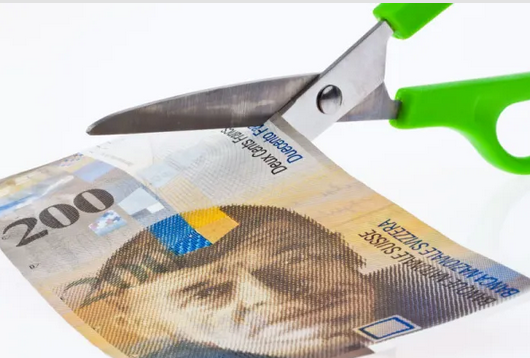© Ginasanders | Dreamstime.com The latest forecast for 2021 shows a deficit of CHF 14.8 billion, down CHF 2.6 billion from an earlier forecast shortfall of CHF 17.4 billion. The deficit is driven mainly by the extraordinary cost of responding to the Covid-19 pandemic. The federal government expects to spend CHF 4.1 billion on vaccines ...
Topics:
Investec considers the following as important: 3) Swiss Markets and News, 3.) Personal Finance, Business & Economy, Business & Economy, Editor's Choice, Featured, newsletter, Personal finance, Politics
This could be interesting, too:
Investec writes Swiss inflation falls further in January
Investec writes Catching ski pass cheats – reactions, fines and worse
RIA Team writes The Importance of Emergency Funds in Retirement Planning
Nachrichten Ticker - www.finanzen.ch writes Gesetzesvorschlag in Arizona: Wird Bitcoin bald zur Staatsreserve?
The latest forecast for 2021 shows a deficit of CHF 14.8 billion, down CHF 2.6 billion from an earlier forecast shortfall of CHF 17.4 billion. The deficit is driven mainly by the extraordinary cost of responding to the Covid-19 pandemic.
The key differences between the earlier forecast deficit of CHF -17.4 billion made in June 2021 and the one of CHF -14.8 billion published are lower than expected ordinary spending (+0.4) and lower extraordinary spending related to the pandemic (+1.9). In addition to these changes are a small forecasted increase in tax receipts (+0.2) and extraordinary income (+0.2).
The federal government is now counting on extra income of CHF 1.5 billion, up from CHF 1.3 billion forecast in June. Much of this (+1.3) is a payment from the Swiss National Bank (SNB), which has generated significant profits on it large holdings of assets. The SNB has been busy buying assets with newly minted Swiss francs as part of its efforts to rein in currency appreciation. Many of the assets it holds have gone up in value. Receipts from VAT and stamp duty have also risen.
The extra tax receipts relate to higher VAT revenue (+0.3) and higher stamp duty (+0.2), offset by lower tax receipts in other areas (-0.2).
Tags: Business & Economy,Editor's Choice,Featured,newsletter,Personal finance,Politics









